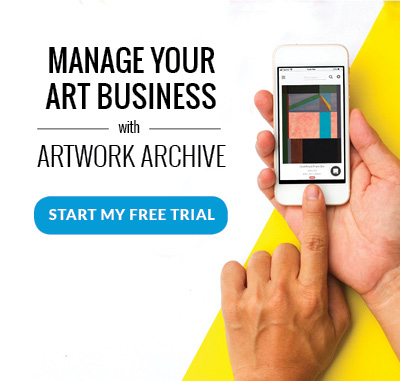 Featured Artist Krista Reuter speaks her truth through paper. Image courtesy of the artist.
Featured Artist Krista Reuter speaks her truth through paper. Image courtesy of the artist.
"Paper is wonderful in its simplicity."
In the hands of paper artist Krista Reuter, the humble material that most people use for notes or grocery lists becomes something entirely different—a medium capable of expressing truth and capturing fleeting moments of beauty.
Krista has built her practice around paper’s unique properties: its ability to be both rigid and flexible, strong yet vulnerable, built up through folding and gluing or taken apart through tearing, burning, and piercing.
“The creative process really begins with curiosity,” she says. “It starts when a color, shape, or texture catches my interest. Then I redirect that moment of amazement into paper form.”
But her path to becoming a professional artist didn’t follow a straight line from studio to gallery wall. She spent years working inside galleries and an arts center, learning the business side of art from the inside out. That experience would prove invaluable when building her own career.
Read on to learn how Featured Artist Krista Reuter creates her layered paper artworks, how she found success in her art career, and the tools she uses to continue growing her art business.
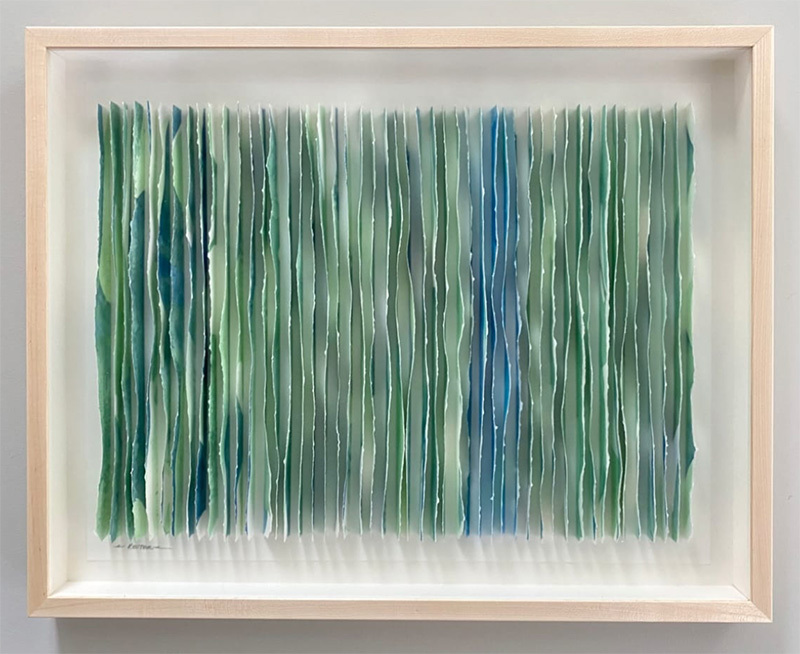 Krista Reuter, immersion.
Krista Reuter, immersion.
Paper Is this Featured Artist's Artistic Muse
For Krista, paper is more than a medium. It’s a muse, an inspiration, and a collaborator.
“It’s playful, minimal, colorless, and colorful," she tells Artwork Archive. "It reflects light and accepts various embellishments beautifully.”
In her studio, you’ll find her tearing, piercing, cutting, folding, and gluing paper, always experimenting with new ways to work with her material. She even burns paper to create organic shapes that no hand could create.
She has tried working with other materials. Mylar, linen, canvas, all lovely materials, but none of them have clicked the way paper does.
“It just resonates with me,” she admits. “I guess I speak my truth through paper.”
 Krista tears, pierces, glues, and—yes—burns paper to create her artworks. Image courtesy of the artist.
Krista tears, pierces, glues, and—yes—burns paper to create her artworks. Image courtesy of the artist.
The Best Art Shuts Down Self-Judgment
From the initial spark of curiosity that kicks off a project for Krista, she likes to work through the creative challenges that each piece poses.
“It’s a little like completing a puzzle,” as she describes it: “deciding how the materials are going to speak to each other in order to achieve that initial moment of interest visually.”
She doesn’t let some predetermined outcome shape the work; instead, she sets aside self judgment so that she can genuinely explore.
“My favorite part of the process is when I am able to gift myself the opportunity to be playful and honest with the work, allowing the process to unfold naturally,” she reflects. “When this occurs, it's a really great feeling.”
 Krista Reuter, shine your light.
Krista Reuter, shine your light.
The Business Side of The Art World
Before focusing on her own practice, Krista spent years behind the scenes of the art world. She was the program director at an arts center, and worked in galleries, always finding ways of supporting other artists.
“I honed my skills in artwork handling, installation, contract negotiations, and grant writing,” she recalls. “I learned about the importance of organizing inventory, establishing a web and social media presence, effectively communicating about the artwork, and understanding the selection process of galleries.”
All of these experiences provided her with a firm foundation that she has built on every year of her own art business. Thriving as an artist is about so much more than the art you create in the studio. To be able to work as an artist over the long term entails building your network, finding your audience, and sharing your excitement about your own work with the world.
Plus, working within a gallery taught her to not take art world rejection too personally: “I now understand the decision-making process from the gallery's perspective,” she shares, “which is often based on gallery needs and timing,” not on the inherent value of any artist’s work.
All of these experiences have left her with a lasting respect for artists of all types. “Each artist has their own unique career vision,” she found. “It's important to listen and respond to their needs, because it is a symbiotic relationship between artists and galleries, and there should be a balance of respect met by both parties.”
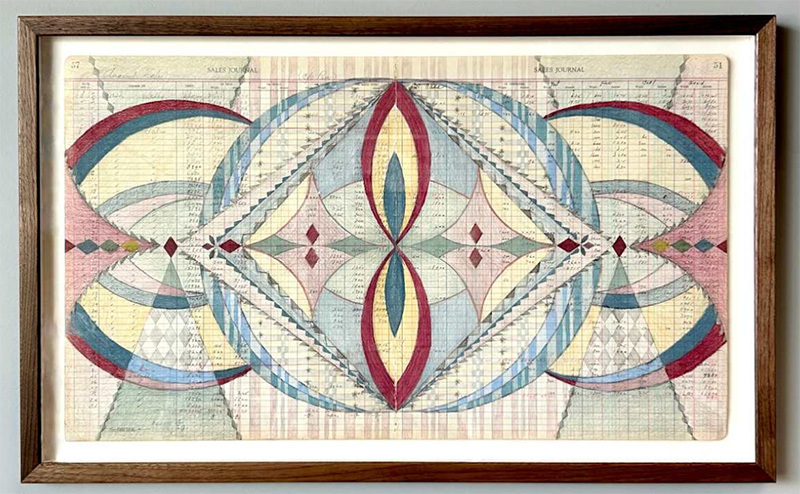 Krista Reuter, twin flames.
Krista Reuter, twin flames.
Finding an Art Inventory System That Works
When Krista started gaining gallery representation and showing her work more widely, she knew that the insider knowledge she had learned from years in the art world would give her a head start on a sustainable art career.
“Having worked in an art gallery, I was familiar with art inventory and online sales systems and how important that method of organization was for the gallery,” she remembers.
So she looked for inventory systems that were designed for artists to use for their own practices. She was hoping to find something that would go beyond just tracking her artworks, something that could serve all her art business needs from invoicing to portfolio documents.
Then, a discovery: “That’s when I found Artwork Archive, a beautifully designed platform that is easy to use and has great customer service.”
That was over a decade ago, and she’s still using the platform today: “I have been a member since 2014, and would recommend it to every artist.”
She has continued to build her career using Artwork Archive because it has proven so useful for all the tasks she needs to carry out every week. It’s become the part of her art business that she can rely on to just work.
“I have watched Artwork Archive grow, and what most impresses me is that the system still has the same great foundational aspects that drew me to it in the first place,” she offers. “Every addition to the system since then has been well thought out and intentional, making the consistency of the service so valuable.”
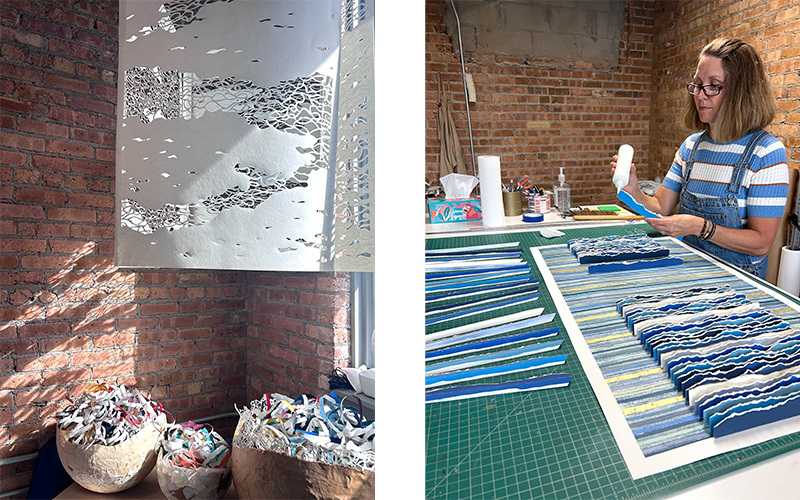 Baskets of torn paper lie in Krista's studio as she works on a new paper artwork. Images courtesy of the artist.
Baskets of torn paper lie in Krista's studio as she works on a new paper artwork. Images courtesy of the artist.
Creating Professional Presentations for Collectors
Because Krista is a working artist, she needs a simple, well-designed way to share her work with clients, collectors, and galleries on a regular basis.
She’s found one Artwork Archive feature that is a lifesaver for this: “I love Private Rooms,” she explains. “It’s a great tool that I use often.”
When she sends her clients a link to the Private Room that she has created specifically for them, “it gives them a beautiful and convenient platform (with all the necessary info) so they can make informed decisions on which pieces they feel are right for their gallery or home/business.”
It makes communication over pieces so much easier to have one simple link that includes all the pieces available, with all the dimensions, pricing, and other information that a client may be taking into account when selecting a work. “Plus,” she adds, “the best part is that they can provide feedback on their decisions with a simple click of the heart icon.”
Have you tried personally curating your work for each collector's needs?
You might be surprised by how impressed clients will be with your professionalism and clean presentation. With Artwork Archive's Private Rooms, you can select work by theme, size, medium, or any other criteria to create unique rooms to your client's exact needs. And with a click, they can let you know they're interested in purchasing a piece. Give it a try today.
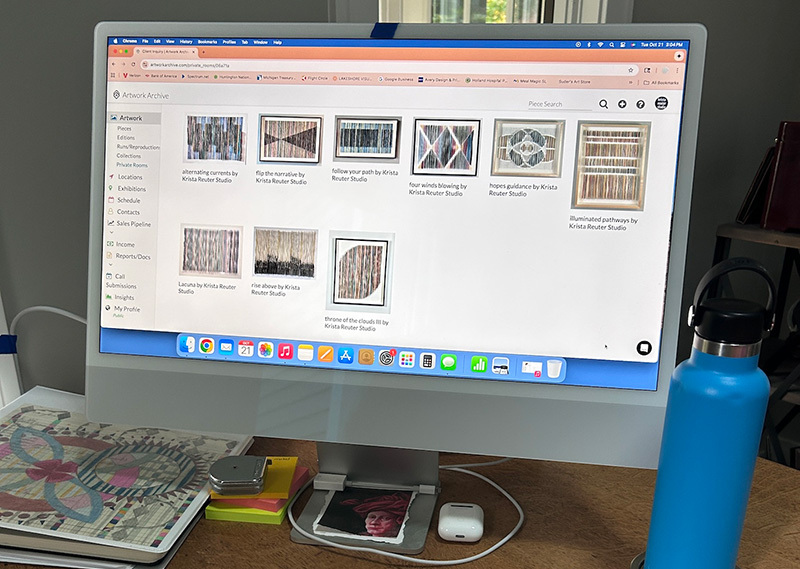 Krista uses Artwork Archive to create Private Rooms for her clients.
Krista uses Artwork Archive to create Private Rooms for her clients.
Krista’s Advice to All Artists
Krista has now spent years in the art world, and she’s learned a few life lessons along the way that she thinks anyone starting out in the art world can benefit from.
To start with, every artist needs to stay true to their creative intuition. Don’t bend your art to fit a market, and don’t follow other people’s artistic paths. “The best mindset shift is to trust in yourself and express that with abandon,” she advises.
If you’re just starting out, or you just graduated from an art program, she suggests that you take some time to get a clear understanding of your overhead and all the material costs associated with all of your pieces. Artwork Archive can help with that with the Income and Expense Tracking tool. Establishing a consistent pricing system now will save you a lot of headache in the long run.
And when it comes to your art business tasks, don’t think they’re going to just get done automatically. “Create a routine for both your creative and business activities and stick to it,” she urges. Schedule dedicated time for your art admin tasks, so you can give them the same kind of attention you would give your creative work. Without that scheduled time, artists will inevitably default to whatever feels the most urgent or comfortable, which is not a recipe for long-term success.
“Remember, art is a business,” Krista says, "consider using Artwork Archive to stay organized!”
 Krista's canine studio assistant sits in front of a work in progress.
Krista's canine studio assistant sits in front of a work in progress.
Express yourself with abandon and keep your administrative work as simple as possible. Taking the time to get your business side in order can give you the peace you need to be fearless in your art. A bit of structure now can mean more time and headspace for the work you actually want to be doing.
Artwork Archive helps artists build an online portfolio, stay on top of their inventory, and create things like tear sheets and invoices in just a few clicks. Start a free trial and see how it fits into your own process.





